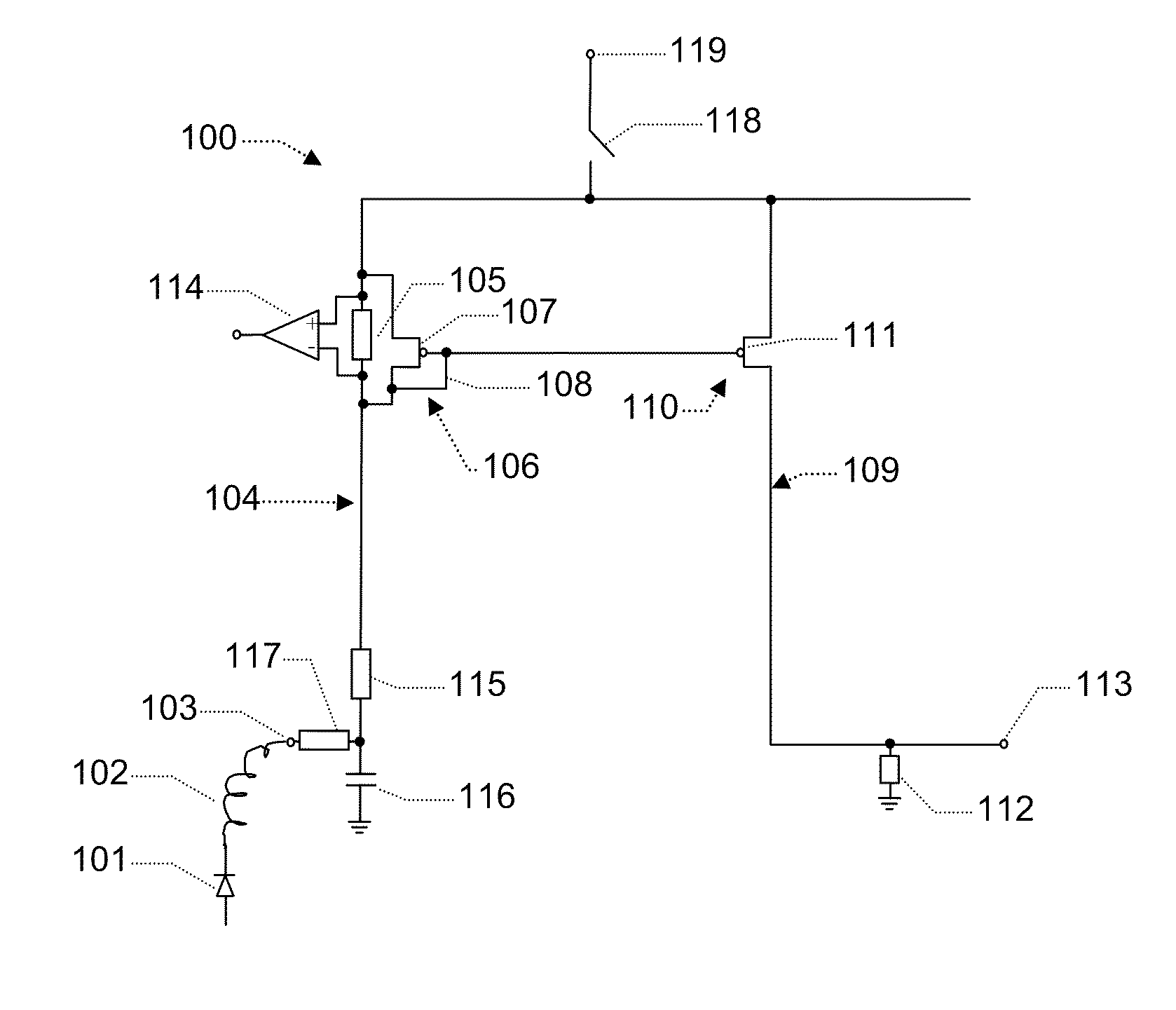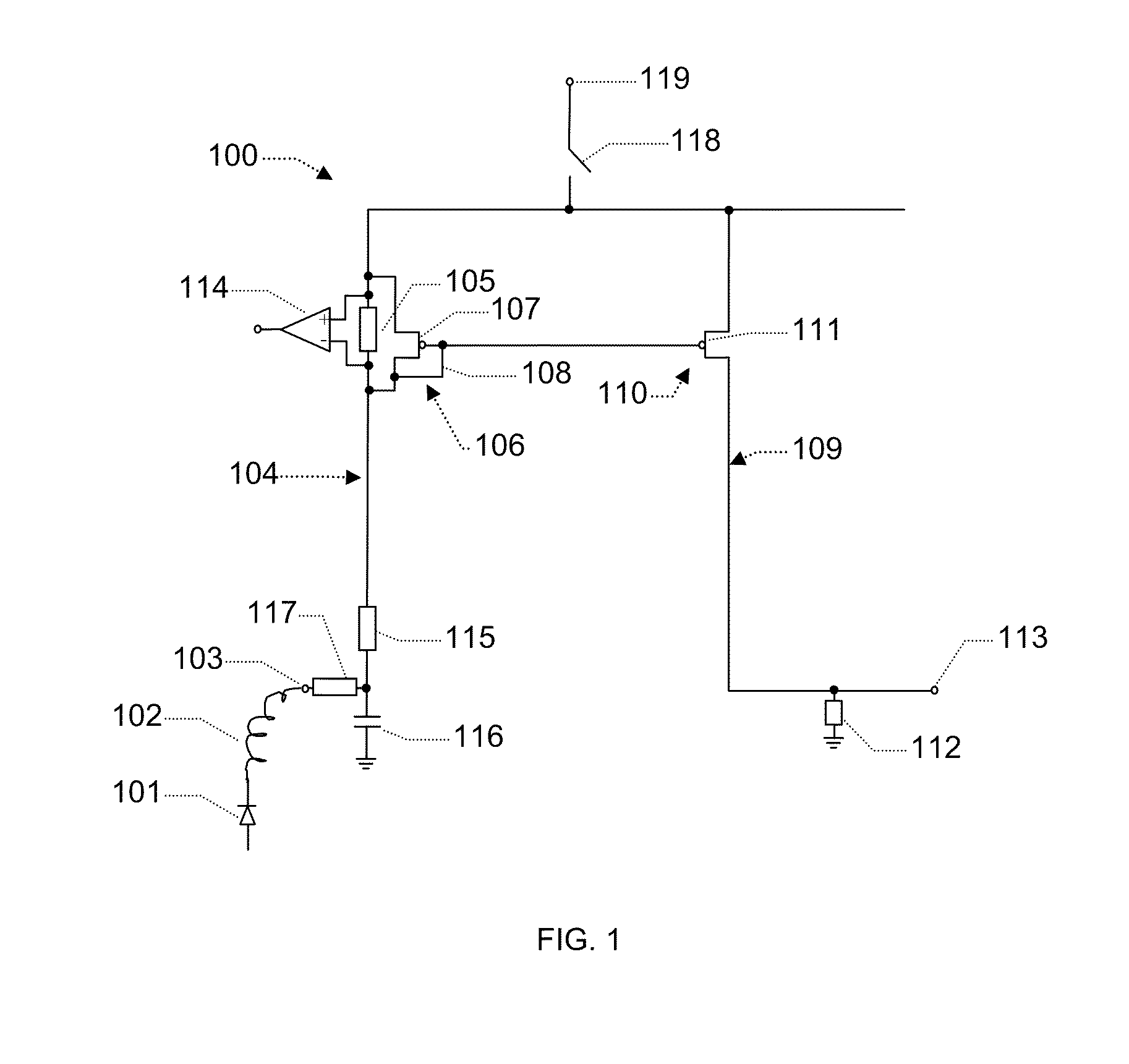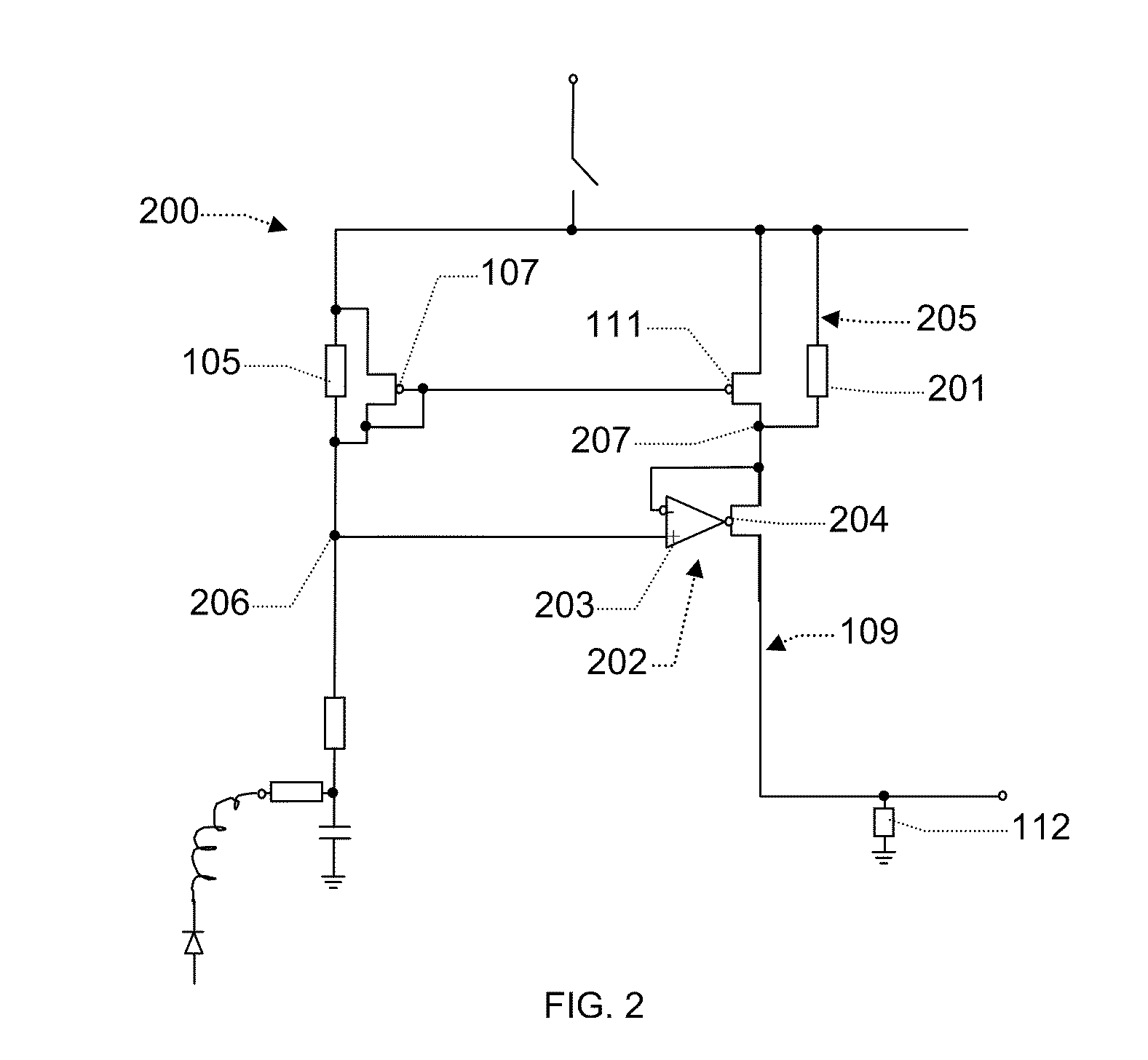Optical receiver
a receiver and optical technology, applied in the field of optical receivers, can solve the problems of large dynamic range of photocurrent, difficult to accurately detect voltage across the resistor, and inability to meet the headroom requirements of the photodiode, and achieve the effect of improving the working point of the tia and sufficient sensitivity
- Summary
- Abstract
- Description
- Claims
- Application Information
AI Technical Summary
Benefits of technology
Problems solved by technology
Method used
Image
Examples
Embodiment Construction
[0028]In one embodiment the first current path is connected with a secondary current path via a voltage controller circuit arranged to impose a voltage from the first branch to the secondary current path. In principle a voltage controller circuit may be any circuit suitable for imposing a voltage in the secondary branch. In this way a voltage related to the voltage across the first sensing resistor may in one embodiment be imposed onto a node of the second current path causing a response related to the current through the first sensing resistor. In one embodiment the secondary current path comprises a second sensing resistor. In one embodiment the imposed the voltage imposed by the voltage controller is arranged to produce a current in said secondary current path, such as a current reflecting the current in the first sensing resistor. In one embodiment the voltage determines the voltage across said second sensing resistor, in another embodiment the current in the second sensing resi...
PUM
 Login to View More
Login to View More Abstract
Description
Claims
Application Information
 Login to View More
Login to View More - R&D
- Intellectual Property
- Life Sciences
- Materials
- Tech Scout
- Unparalleled Data Quality
- Higher Quality Content
- 60% Fewer Hallucinations
Browse by: Latest US Patents, China's latest patents, Technical Efficacy Thesaurus, Application Domain, Technology Topic, Popular Technical Reports.
© 2025 PatSnap. All rights reserved.Legal|Privacy policy|Modern Slavery Act Transparency Statement|Sitemap|About US| Contact US: help@patsnap.com



